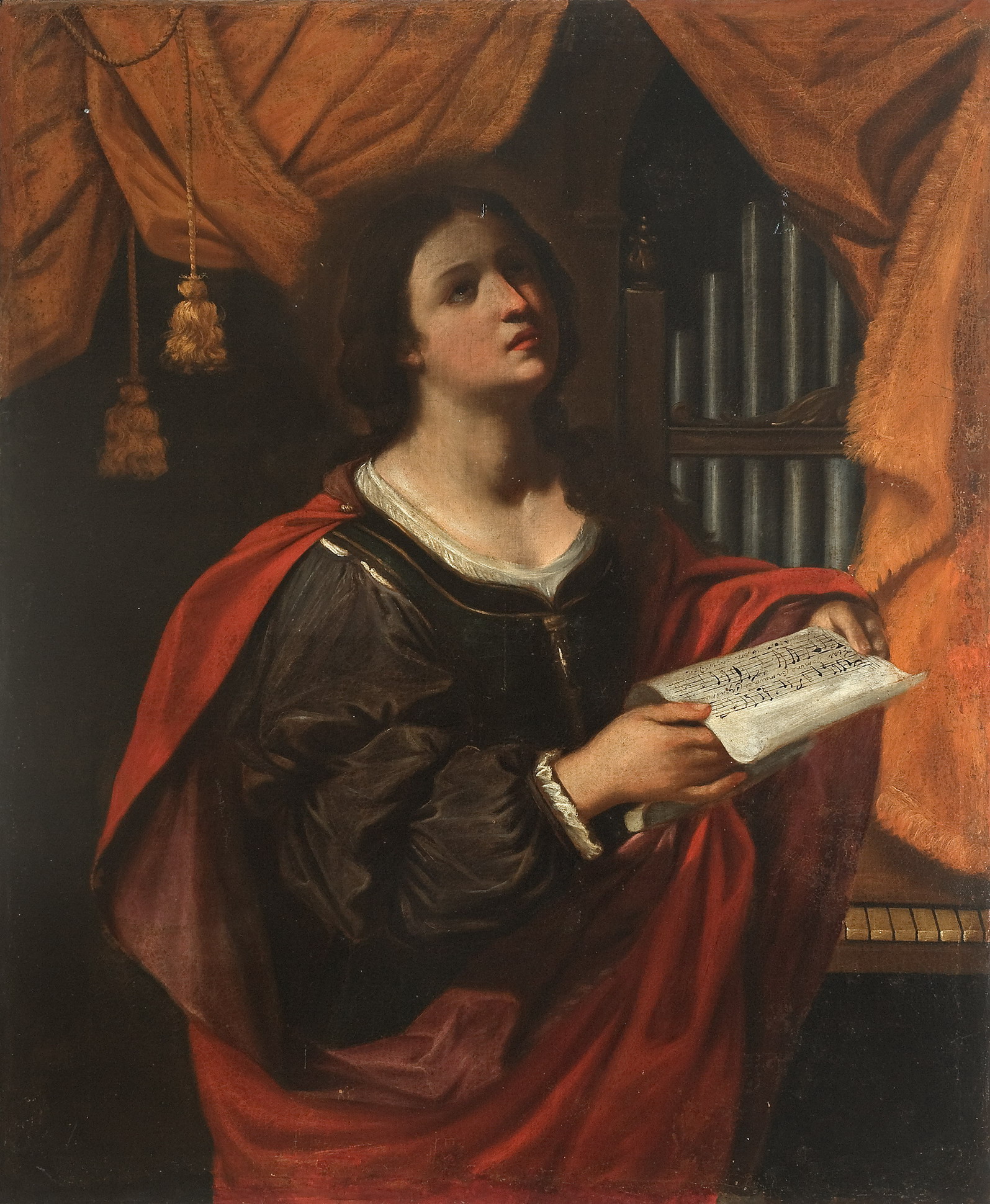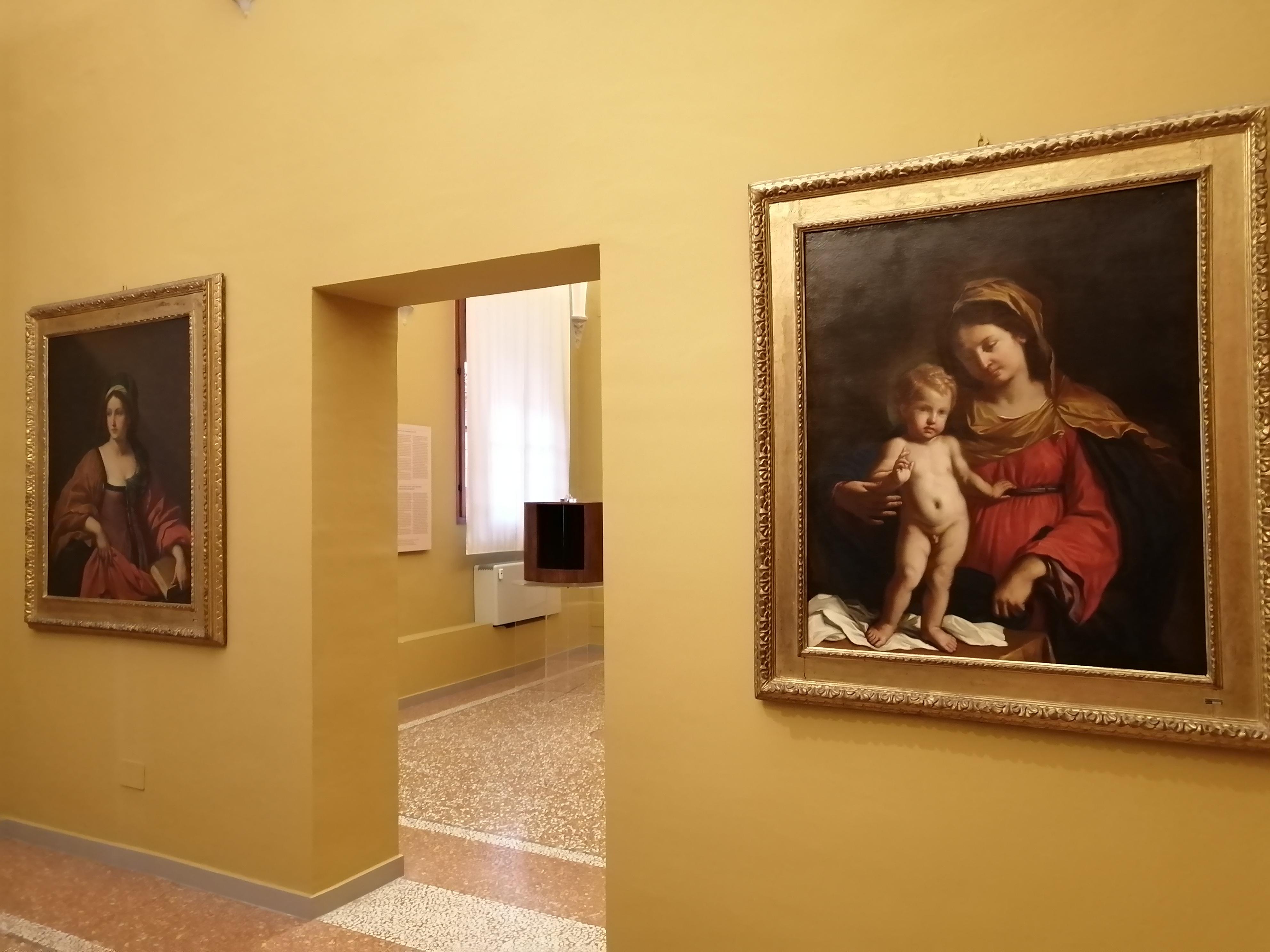Guercino sites in Bologna and Cento
Updated on 31 May 2025 From Bologna Welcome
Born in Cento in 1591, Giovanni Francesco Barbieri known as Il Guercino was one of the most celebrated painters of his time. From 1642 he lived in Bologna. His immense fame is evidenced by the visit Queen Christina of Sweden made to him in 1655: the sovereign asked the painter if she could touch his hand, “which had worked marvels.”
Guercino's works in the area trace fascinating itineraries among churches, streets and museums.
National Picture Gallery of Bologna
To Guercino, whose 13 works it preserves, the Pinacoteca Nazionale di Bologna has dedicated the main room of the seventeenth- and eighteenth-century section.
Pivotal points in the production of the master from Cento are the Vestizione di San Guglielmo (1620), an altarpiece of solemn monumentality, and the imposing San Bruno in adorazione della Madonna in gloria (1647), a masterpiece of his maturity that is the result of a probable collaboration with his brother Paolo Antonio Barbieri, a still-life painter.

"Lucrezia romana" - Picture Gallery of Palazzo Magnani, Bologna
Believed to be one of Guercino's earliest known paintings, Christ Praying in the Garden of Olives reveals how the painting of Ludovico Carracci and that of Scarsellino was a key starting point for the artist. Barbieri's Cento years also refer to the large Trinity, whose figures are designed for a view from below, while the Roman Lucrezia was executed in 1644 for the governor of Cento by the now famous painter far from his hometown.

"Hercules and Antaeus" - Palazzo Sampieri Talon
In October 1631, Astorre Sampieri paid 100 scudi to Guercino for the creation of the Hercules wrestling with Antaeus: foreshortened from below, the two figures towered over the ceiling of a ground-floor room. According to Carlo Cesare Malvasia, the work, executed dry, fully highlighted Guercino's “excellence of drawing.” In the halls of the palace, Barbieri's painting compared directly with the paintings that the Carracci had dedicated nearly forty years earlier to the mythological hero.
Palazzo Pepoli is home to the Museum of the History of Bologna, dedicated to the culture and transformations of the city over the centuries. In the narrative from Etruscan origins to the present day, a room dedicated to the Felsina painter could not be missing, with which to illustrate the prolific era of the Accademia del Naturale. It was in this school that Giovan Francesco Barbieri known as Guercino was trained. At the Museum of the History of Bologna, it is possible to admire his Madonna of the Rose with Child, a sort of “portable fresco,” proof of bravura that is striking because of the painter's young age, 25 at the time.

©Elettra Bastoni, Palazzo Pepoli. Museo della Storia di Bologna
In 1808 Jacopo Alessandro Calvi gave to the presses the Notizie della vita di Guercino (News of Guercino's life), a text that can be considered the “first modern biography” of the master from Cento, celebrated for his unmistakable manner, marked by a vivid naturalism and a “soft and suave coloring.” Such aspects proved to be a source of admiration not only for Calvi the art writer, but also for Calvi the painter, as attested by the Beata Vergine Addolorata at the Davia Bargellini Museum, executed around 1804, thus in close proximity to the writing of the biographical volume.

©Museo Davia Bargellini
Two important works at the Museo Medievale are useful for constructing the context within which Guercino's activity unfolds: to the time of his Roman sojourn leads the Bust of Pope Gregory XV Ludovisi, modeled by Bernini around 1621-22, an expression of the early and innovative experiments on animation effects carried out in the papal capital by the great sculptor; to the Bolognese tradition, capable of resolving the dynamism of action in opposing and intersecting rhythms, leads instead the bronze group of St. Michael the Archangel Landing the Devil, made by Bernini's greatest antagonist, Algardi, around 1650, thus corresponding with the late phase of the centesian, by then a permanent resident of Bologna.

©Museo Medievale
The Ulisse Aldrovandi Trail at the Museum of Palazzo Poggi recounts the figure of the Bolognese scientist who, in the 1500s, began to study nature from life and have it reproduced by artists and engravers in images from which his contemporary painters did not hesitate to draw inspiration. It is in this groove that the painting of Guercino (1591-1666), an artist capable of observing the nature in front of him and transposing it without idealizing it onto canvas, also entered.

Allestimento della Sala “Casa, studio e museo” Museo di Palazzo Poggi ©Sistema Museale di Ateneo
Among the treasures preserved at the Inzaghi Art Gallery, it is possible to take a close look at Guercino's painterly temperament and fame. The half-figure portrayals of the saints “Cecilia” and “Agnese” replicate and vary the celebrated models of Barbieri and his workshop. The collection also includes valuable drawings by the painter, who devoted great energies to graphic design and the various expressive results of his tools, from pen to charcoal to sanguine.

Santa Cecilia ©Pinacoteca Civica Domenico Inzaghi
Even in his years away from Cento, Guercino maintained a very intense connection with the town. The churches, palaces and territory of Cento are dotted with the works of the painter and his school. The Pinacoteca Civica makes it possible to reread Barbieri's painting from his models (particularly Ludovico Carracci), and to reconstruct the artist's path through some absolute masterpieces, such as the "Madonna with Blessing Child" and the "Risen Christ Appearing to Mary",admired by Velázquez and Goethe.

Disturbed by the looming Castro War on Cento, in 1642 Guercino left his native town and took shelter in Bologna. A guest at first of Count Filippo Aldrovandi, the painter bought in 1644 a large house in Via del Carbone, today Via S. Alò. In this house-studio the painter reunited his brother Paolo Antonio, sisters and their respective families. Two of Guercino's nephews, Benedetto and Cesare Gennari, sons of Lucia Barbieri, continued the artist's workshop after his death.
-> The house wll be open to the public only on special occasions

via centronatura.it
One room in ASP City of Bologna's La Quadreria is entirely dedicated to the display of works from Guercino's Bologna workshop. Six canvases produced by the master and his disciples can be viewed in the building. His pupils included his nephew Cesare Gennari, who executed the prestigious portraits of two benefactors of the Opera Pia dei Poveri Vergognosi, Francesco Maria Dal Sole and Dorotea Fiorenzi Saccenti, also on display in La Quadreria.

Live an exclusive experience: enter a private mansion and admire Guercino's “Hercules and Antheus” fresco up close.

